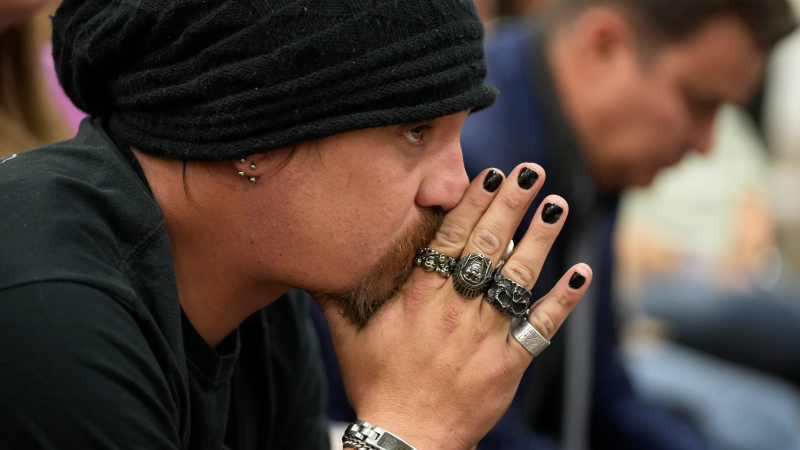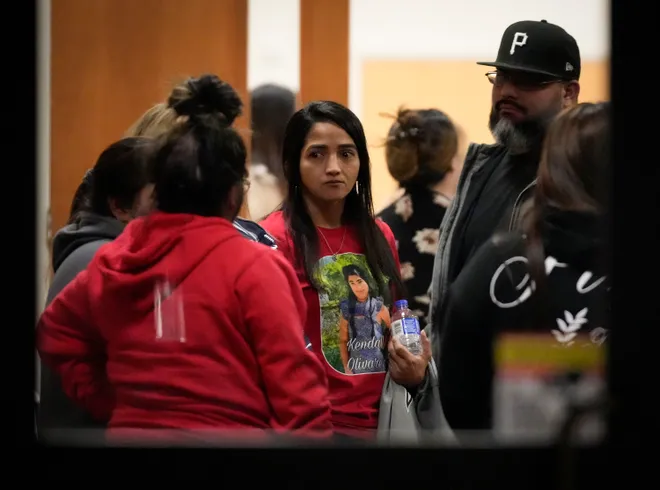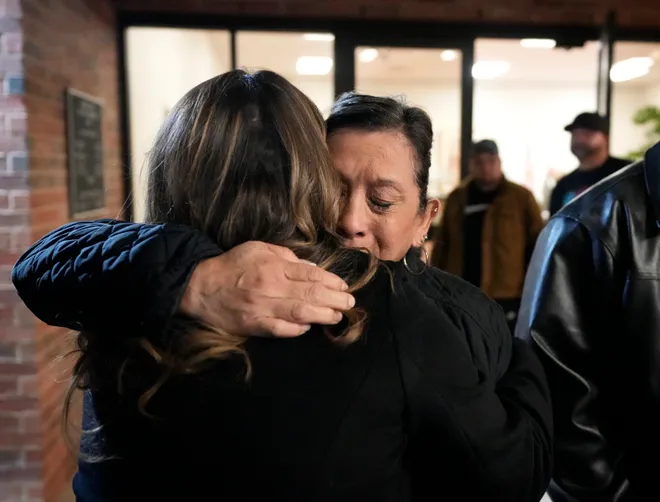After 604 days, Uvalde families finally have DOJ's long-awaited school shooting report
UVALDE, Texas − In sometimes damning language, the U.S. Justice Department's report into the worst school shooting in Texas history describes the response by law enforcement as a "failure" with no one taking full command, and the school's police chief taking actions that delayed efforts to save lives and to confront the heavily armed gunman.
To compile the nearly 500-page report released Thursday just blocks from Uvalde’s Robb Elementary School, where the carnage occurred in 2022, the DOJ’s team collected and reviewed more than 14,000 pieces of data and documentation, including training logs, audio, video, CCTV, photographs, personal records, investigative records. On the ground, federal investigators conducted more than 260 interviews of people involved or affected, including police officers, elected officials, hospital workers and survivors.
“In summary, the response to the May 24, 2022, mass casualty incident at Robb Elementary School was a failure,” said the report, which was formally presented by U.S. Attorney General Merrick Garland. “The painful lessons detailed in this report are not meant to exacerbate an already tragic situation or further the pain and trauma to those directly impacted by the events on May 24 and the subsequent days, weeks and months.
“The goal is that this report provides answers to those directly impacted, while also conveying recommendations and lessons learned to the nation.”
What you need to know:DOJ to release Uvalde school shooting report Thursday

In its exhaustive analysis of the top-to-bottom failures that combined to make the shooting one of the worst in history, the report aimed not only to help prevent further shootings, but also to guide, unflinchingly, the next American community that will face this tragedy on how to best respond.
The release capped an emotional two days in Uvalde, a city of about 29,000 that was catapulted into the nation’s consciousness because of the brutality of the shooter and the breakdown of standard law enforcement procedures when responding to an ongoing shooting with lives hanging in the balance.
By the time the shooter was killed by U.S. Border Patrol agents and not by the hundreds of state and local law officers who swarmed to the school, 19 children and two of their teachers were dead and 17 other children and adults were wounded.
Eleven officers from the Uvalde Consolidated Independent School District and Uvalde Police Departments arrived on the scene within three minutes of the shooter's entry. Five advanced initially and two were hit by shrapnel. Police made three attempts to enter the classrooms, which are adjoined by an interior door.
Police Chief Pete Arrendondo, who has since been fired, "directed officers at several points to delay making entry into classrooms in favor of searching for keys and clearing other classrooms.” He also attempted to negotiate with the shooter and treated the gunman as a barricaded subject instead of a continuing threat to children and school staff.
No command and control structure was established or command post set up.

Garland’s team of investigators, which included several veteran or retired law enforcement executives interviewed 26 people, including victims’ family members and survivors, first responders and medical caregivers.
The shooting was the deadliest at a Texas school and became one of the most high-profile law enforcement failures in American history.
As grief-stricken and frightened parents gathered outside the school that day, social media videos showed them begging officers to go inside and rescue their children. About 77 minutes passed before a U.S. Border Patrol team killed the gunman, armed with an AR-15-style assault rifle.
Video showed the shooter walking into Robb Elementary and moving directly to a classroom where he immediately opened fire. Officers arrived within minutes and attempted to enter the room. They dispersed when the shooter returned fire, and police did not attempt to enter the classroom for more than hour.

Immediately after the shooting, officials including Gov. Greg Abbott and U.S. Homeland Security Secretary Alejandro Mayorkas told a story of police heroism and said more children would have died without a swift law enforcement response.
That story began falling apart days later – and was dismantled when the Austin American-Statesman, part of the USA TODAY Network, published a video from inside the school showing law enforcement standing in the hallway, looking at floor plans and talking on the phone but not entering the classroom.
A report by a select committee of the Texas Legislature months after the shooting cited "systemic failures and egregious poor decision making" including school officials who did not prepare properly for a shooting and police who failed to follow training for active shooters.
All told, fewer than 10 law enforcement officers are known to have either resigned or been fired after the shooting, the most-known of whom was Arredondo, who was dismissed by the district about three months after the shooting.
The investigative case file from the shooting has not been publicly released, although portions have been disclosed through the media. News outlets, including the Statesman, have joined other organizations in suing DPS for the release, but the agency has appealed a district court ruling ordering its release. The appeal has not yet been adjudicated.
Please check back for updates.
Disclaimer: The copyright of this article belongs to the original author. Reposting this article is solely for the purpose of information dissemination and does not constitute any investment advice. If there is any infringement, please contact us immediately. We will make corrections or deletions as necessary. Thank you.




